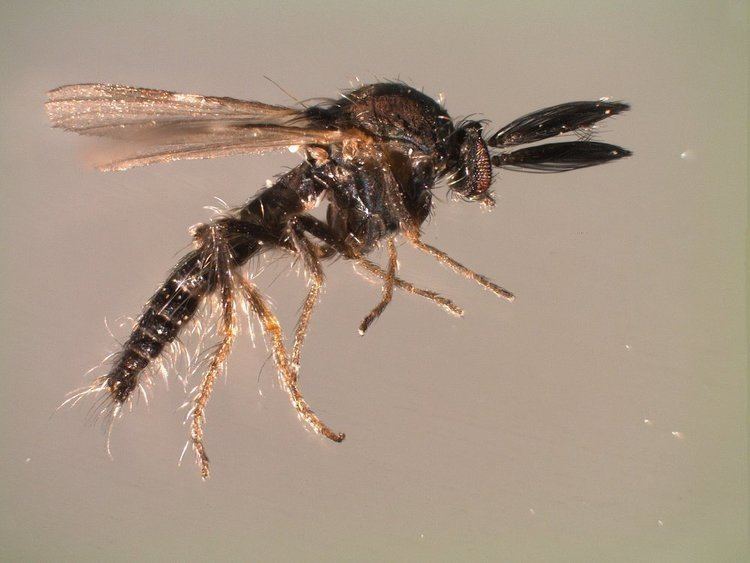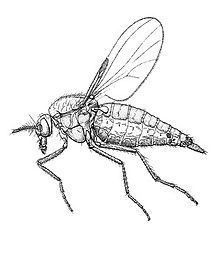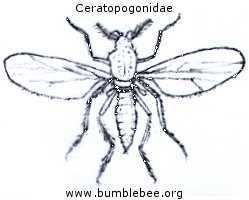Order Diptera Scientific name Ceratopogonidae Rank Family | Higher classification Culicomorpha | |
 | ||
Lower classifications | ||
Ceratopogonidae
Ceratopogonidae, or biting midges, are a family of small flies (1–4 mm long) in the order Diptera. They are also known as no-see-ums, midgies, sand flies, punkies, and others in North America, and sandflies in Australia. (The name "sandfly" is ambiguous, as it is also applied informally to many other flies, such as the subfamily Phlebotominae.) They are closely related to the Chironomidae, Simuliidae (or black flies), and Thaumaleidae.

They are found in almost any aquatic or semiaquatic habitat throughout the world, as well as in mountain areas. Females of most species are adapted to suck blood from some kind of host animal for the purpose of anautogenous reproduction. Culicoides, Forcipomyia (Lasiohelea), and Leptoconops suck vertebrate blood. Some Atrichopogon and Forcipomyia species are ectoparasites on larger insects. Dasyhelea species feed exclusively on nectar. Species in other genera are predatory on other small insects. Larvae are always found in some damp location, such as under bark, in rotten wood, compost, mud, stream margins, tree holes, or water-holding plants (i.e., phytotelmata).

Many of the hematophagic (blood-eating) species are pests in beach or mountain habitats. Some other species are important pollinators of tropical crops such as cacao. The blood-sucking species may be vectors of disease-causing viruses, protozoa, or filarial worms. The bite of midges in the genus Culicoides causes an allergic response in equines known as sweet itch. In humans, their bites can cause intensely itchy, red welts that can persist for more than a week. The discomfort arises from a localized allergic reaction to the proteins in their saliva, which can be somewhat alleviated by topical antihistamines.

The smaller members of the family are tiny enough to pass through the apertures in typical window screens. Camping tents are often equipped with extra-fine mesh netting, called no-see-um nets, to keep the pests out. One experienced researcher recommends: "A mesh size of 4900 (per square inch) will stop most biting midges, but to ensure that even the smallest cannot feast on you, a mesh size of 10,000 is necessary."

Species in this family are known to be vectors for various arboviruses, as well as for nonviral animal pathogens. An example is the Tete virus, spread by Culicoides sp.
